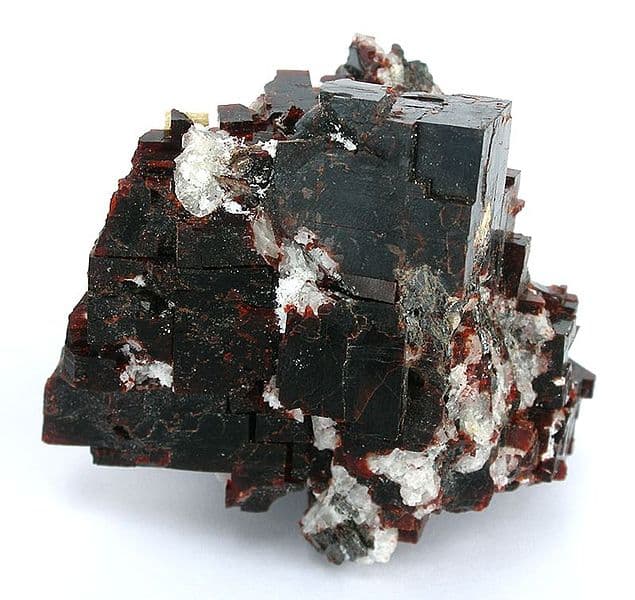Villiaumite Value, Price, and Jewelry Information
Villiaumite is seldom discussed among collectors of rare gemstones because until recently no facetable material was known. The material from Los was reported in 1976 and has been cut into tiny gemstones of deep red color. Despite their small size, they are desirable because so few stones exist. The material from Quebec is larger but very scarce. Villiaumite is somewhat water-soluble, and cutters must use special tricks (such as using alcohol as a cutting coolant) to facet the material.
Villiaumite is seldom discussed among collectors of rare gemstones because until recently no facetable material was known. The material from Los was reported in 1976 and has been cut into tiny gemstones of deep red color. Despite their small size, they are desirable because so few stones exist. The material from Quebec is larger but very scarce. Villiaumite is somewhat water-soluble, and cutters must use special tricks (such as using alcohol as a cutting coolant) to facet the material.
Start an IGS Membership today
for full access to our price guide (updated monthly).Villiaumite Value
Optics: N: 1.327: isotropic.
Occurrence: In alkalic rocks, such as nepheline syenites.
Kola Peninsula, USSR.
Los, Guinea: Los is an island off the Guinea coast; facetable villiaumite occurs in nepheline syenite in reddish crystals, R.l. I l.33O—1.332, S.G. 2.79.
Francon Quarry,Mt. Ste. Hilaire, Quebec.
Comments: Villiaumite is seldom discussed among collectors of rare gemstones because until recently no facetable material was known. The material from Los was reported in 1976 and has been cut into tiny gemstones of deep red color. Despite their small size, they are desirable because so few stones exist. The material from Quebec is larger but very scarce. Villiaumite is somewhat water-soluble, and cutters must use special tricks (such as using alcohol as a cutting coolant) to facet the material.
Name: After M. Villiaume, a French explorer in whose collection of rocks from Guinea the material was first discovered.
Joel E. Arem, Ph.D., FGA
Dr. Joel E. Arem has more than 60 years of experience in the world of gems and minerals. After obtaining his Ph.D. in Mineralogy from Harvard University, he has published numerous books that are still among the most widely used references and guidebooks on crystals, gems and minerals in the world.
Co-founder and President of numerous organizations, Dr. Arem has enjoyed a lifelong career in mineralogy and gemology. He has been a Smithsonian scientist and Curator, a consultant to many well-known companies and institutions, and a prolific author and speaker. Although his main activities have been as a gem cutter and dealer, his focus has always been education.
Related Articles
Sugilite Value, Price, and Jewelry Information
Sellaite Value, Price, and Jewelry Information
Color Change Sapphire Value, Price, and Jewelry Information
Brucite Value, Price, and Jewelry Information
Never Stop Learning
When you join the IGS community, you get trusted diamond & gemstone information when you need it.
Get Gemology Insights
Get started with the International Gem Society’s free guide to gemstone identification. Join our weekly newsletter & get a free copy of the Gem ID Checklist!
